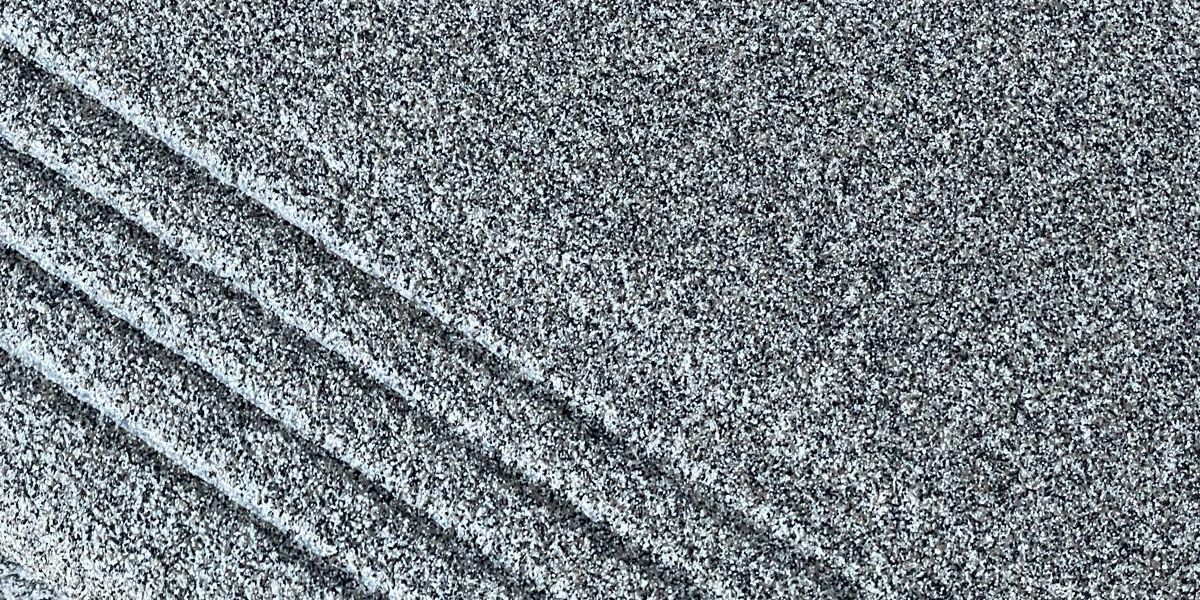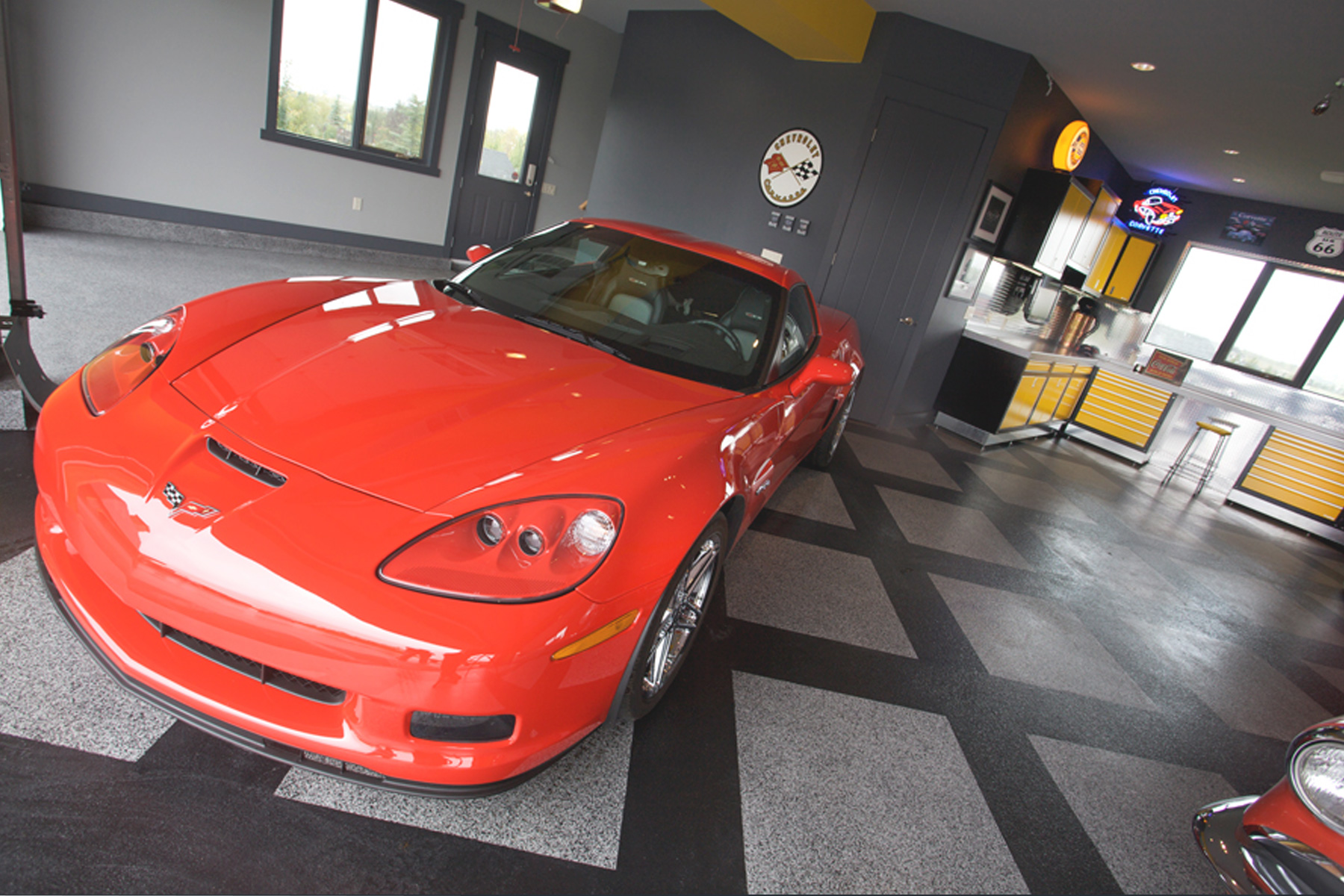
Cracks, stains, and dull finishes—if your garage floor has seen better days, you’re not alone. For many Calgary homeowners, the garage is more than just a parking space–it’s a workshop and a gym, and for some, it’s even an extension of the home. But with Calgary’s extreme weather conditions, finding the right floor coating isn’t always straightforward.
Two of the most popular garage flooring options on the market today are epoxy and polyaspartic coatings, especially for homeowners seeking the best garage floor coating for cold climates like Calgary.
While both offer protection and improved aesthetics, there are key differences that aren’t always discussed. Let’s dive into what makes these coatings unique—and which one really stands up to Calgary’s demanding climate.
What are Epoxy and Polyaspartic Coatings?
If you’re researching Calgary garage flooring, it’s important to understand what these two materials offer and how they hold up under local conditions.
Epoxy Coatings
Epoxy coatings are made from a two-part mix of resin and hardener. When combined, they create a strong bond with concrete, forming a hard, durable surface. Epoxy is commonly used in garages, workshops, and industrial settings for its resistance to oil, chemicals, and everyday wear. It’s often applied with decorative flakes for texture and visual appeal.
Polyaspartic Coatings
Polyaspartic coatings are a more advanced solution. They’re part of the polyurea family and offer faster curing, UV resistance, and more flexibility in application. Unlike epoxy, polyaspartic can be installed in a wider range of temperatures—including colder weather—making it ideal for Calgary conditions.
Durability and Longevity
When choosing a garage floor coating, longevity is one of the most important factors—especially in Calgary, where surfaces must endure snow, salt, and sharp temperature swings. A durable coating not only protects your concrete but also reduces the need for costly repairs or replacements down the line.
Here’s how epoxy and polyaspartic compare when it comes to standing the test of time:
Epoxy:
-
- Pros: Tough surface, excellent resistance to chemicals and stains.
- Cons: Vulnerable to UV exposure (can yellow over time), may chip or crack with Calgary’s freeze-thaw cycles.
Polyaspartic:
-
- Pros: UV-stable (no yellowing), flexible enough to resist cracking, and built to withstand Calgary’s cold winters.
- Cons: Higher initial cost, but requires fewer repairs and replacements over time.
Cure Time and Application
Cure time can make or break a garage flooring project, especially when your space doubles as a workspace or storage area. Whether you’re scheduling around a renovation or don’t want your garage out of commission for too long, it’s important to understand how epoxy and polyaspartic coatings compare when it comes to installation time and flexibility.
Epoxy:
-
- Takes 24–72 hours to fully cure, depending on temperature, humidity, and ventilation.
- Requires specific environmental conditions—the surface and air must be within a narrow temperature range to ensure proper bonding.
- This means more downtime, as you may have to wait several days before walking or driving on the floor.
Polyaspartic:
-
- Cures for foot traffic within 4 hours and full curing in as little as 1–2 days, offering a much faster turnaround.
- Can be applied in a wider range of temperatures, making it ideal for year-round application in Calgary, even during colder months.
- The quick cure time allows for minimal disruption, letting you get back to using your garage almost immediately.
Aesthetic Options and Customization
A great garage floor doesn’t just need to be tough—it should look good, too. Whether you’re aiming for a clean, modern finish or a bold, textured look, both epoxy and polyaspartic coatings offer decorative possibilities. However, they differ in how well those finishes hold up over time, especially under Calgary’s unique climate conditions.
Epoxy:
Epoxy coatings are available in a wide range of colours and finishes, making it easy to match your garage to your personal style. Decorative flakes are commonly added to create texture, visual depth, and improved traction. While epoxy looks great at first, it can lose its shine or fade over time, particularly when exposed to UV rays or harsh chemicals.
Polyaspartic:
Polyaspartic coatings provide equally diverse customization options but with superior UV stability. The result is a glossy, long-lasting finish that resists fading and retains its vibrant colour, even when exposed to sunlight, snow, salt, or oil. If you’re looking for a floor that looks great and stays looking great, polyaspartic is the clear winner.
Maintenance and Cleaning
A great-looking floor is only as good as its ability to stay that way with minimal effort. Maintenance needs can vary dramatically between coating types, especially in busy garages exposed to road salt, oil spills, or seasonal grime. Here’s how epoxy and polyaspartic stack up when it comes to everyday cleaning and long-term upkeep.
Epoxy:
-
- Can require frequent touch-ups, especially in high-traffic zones.
- Sensitive to harsh chemicals and extreme temperatures, which can lead to peeling, discoloration, or staining.
- Maintenance can become time-consuming and costly over the years.
Polyaspartic:
-
- Designed to be low-maintenance and easy to clean.
- Highly resistant to oil, salt, chemicals, and stains.
- Retains shine and appearance with minimal upkeep—perfect for busy homeowners.
Cost and Value
When it comes to garage flooring, budget is always a consideration—but so is long-term value. While some coatings may seem more affordable up front, they could end up costing more over time due to repairs, maintenance, and shorter lifespans. Here’s how epoxy and polyaspartic compare from both a cost and value perspective.
Epoxy:
-
- Pro: Lower initial cost.
- Pro: Widely available and familiar to most contractors.
- Con: Longer cure times can lead to higher labour costs.
- Con: Requires more frequent touch-ups or repairs over time.
- Con: Higher long-term cost due to maintenance and shorter lifespan.
Polyaspartic:
-
- Pro: Faster curing time reduces downtime and labour costs.
- Pro: Long-lasting and highly durable, with fewer repairs needed.
- Pro: Low maintenance and excellent resistance to wear and tear.
- Pro: Delivers better overall value in the long term.
- Con: Higher upfront installation cost compared to epoxy.
The Calgary Climate Advantage
Garage floors in Calgary endure more than everyday wear—they’re exposed to some of the harshest conditions in Canada. From frigid winters and heavy snow to corrosive road salt and intense UV rays, your floor coating needs to do more than just look good—it has to perform. Freeze-thaw cycles can cause cracking, while moisture and salt wear down lower-quality coatings. Sudden temperature shifts and winter sunlight add even more stress, often leading to discoloration or premature failure, especially with traditional epoxy.
Why Polyaspartic Wins in Calgary:
-
- Flexible and durable, polyaspartic coatings offer higher durability for scratch resistance, impact resistance, and is more flexible than a standard epoxy.
- Its UV-stable formula so it will not yellow or fade, even with sun exposure through garage windows.
- Polyaspartic cures quickly, even in low temperatures, making it a practical option for installations year-round, not just during warmer months.
- Calgary homeowners benefit from a coating that’s built for local conditions, with minimal maintenance and maximum resilience.
Epoxy vs Polyaspartic Floor Coatings: Which is the Better Choice?
When it comes to protecting and enhancing your garage floor, both epoxy and polyaspartic coatings offer solid benefits—but there are some clear differences that make one option stand out, especially for Calgary homeowners.
Key Differences:
-
- Durability: Polyaspartic performs better in extreme temperatures and resists cracking over time.
- Cure Time: Polyaspartic sets faster, allowing a quicker return to regular use.
- Maintenance: Polyaspartic requires less upkeep and holds up better against chemicals, salt, and stains.
- Aesthetics: Polyaspartic maintains its glossy finish and vibrant colour longer, even with UV exposure.
The Garage Store Recommendation:
While epoxy has long been a popular choice for garage flooring, polyaspartic coatings clearly offer more advantages for Calgary’s unique environment. Given the city’s harsh winters, fluctuating temperatures, and high UV exposure, polyaspartic stands out as the more resilient, efficient, and visually lasting option. It may cost more upfront, but the payoff is a low-maintenance, long-lasting, and high-performance floor that continues to look great for years to come.
For Calgary homeowners who want durability, style, and peace of mind, polyaspartic is the smart investment—built to handle the climate and deliver lasting value.
Ready to transform your garage?
Don’t settle for a cracked, dull, or hard-to-maintain garage floor. Whether you’re upgrading for durability, aesthetics, or year-round performance, The Garage Store has the solution built for Calgary living.
Book a free consultation today and discover why polyaspartic is the best garage floor coating for Calgary homes. From fast installation to long-lasting results, polyaspartic flooring offers unmatched durability, low maintenance, and a finish that keeps your space looking sharp for years to come.


